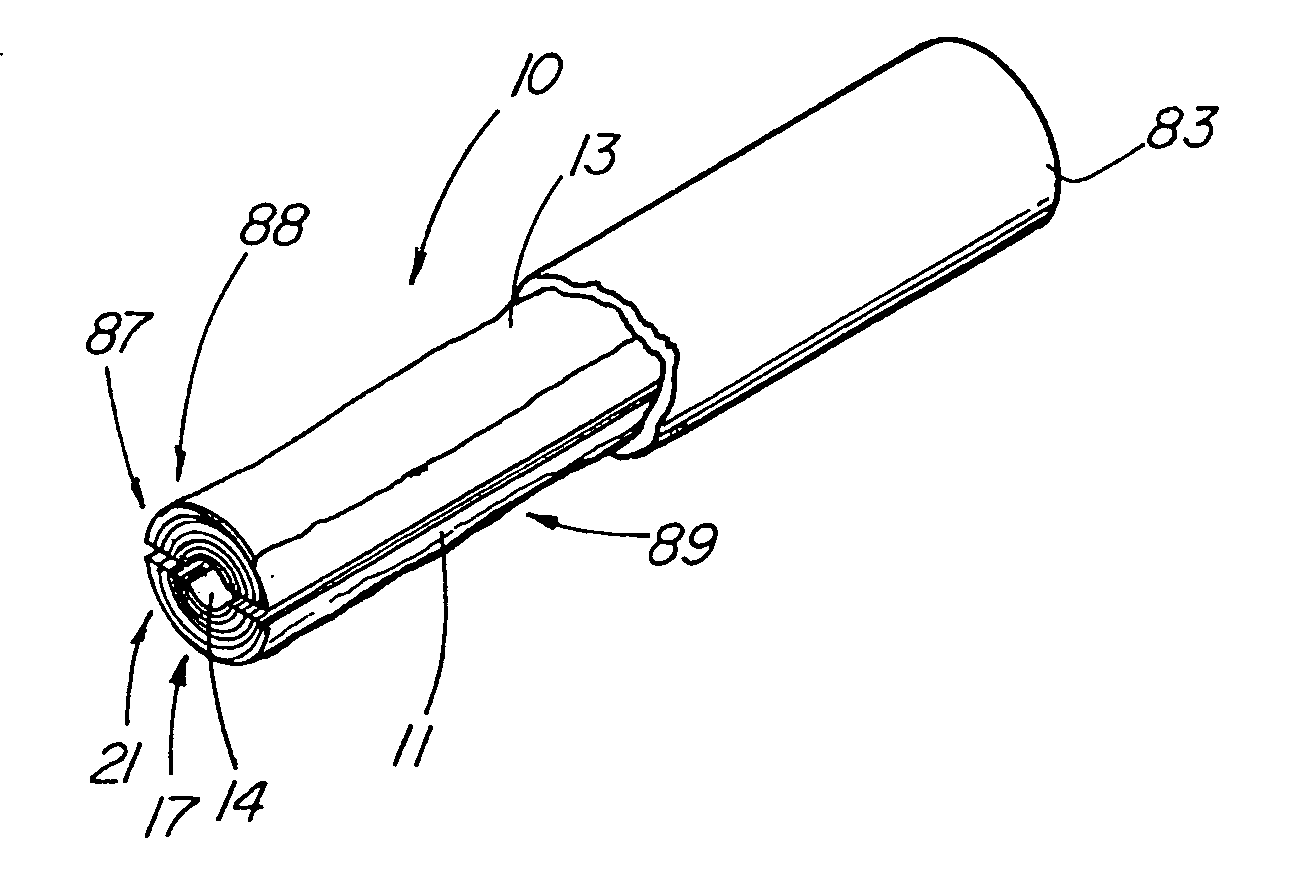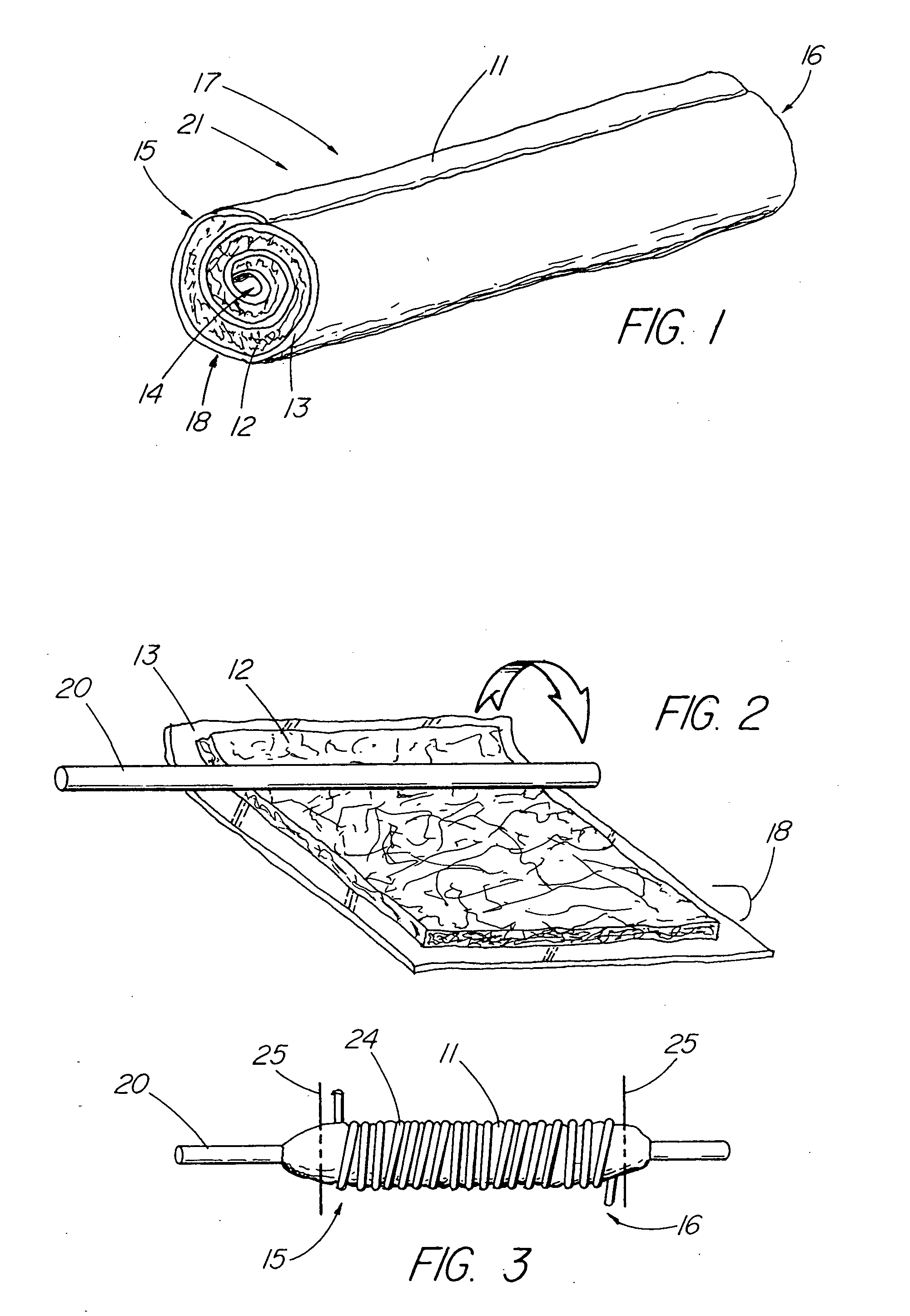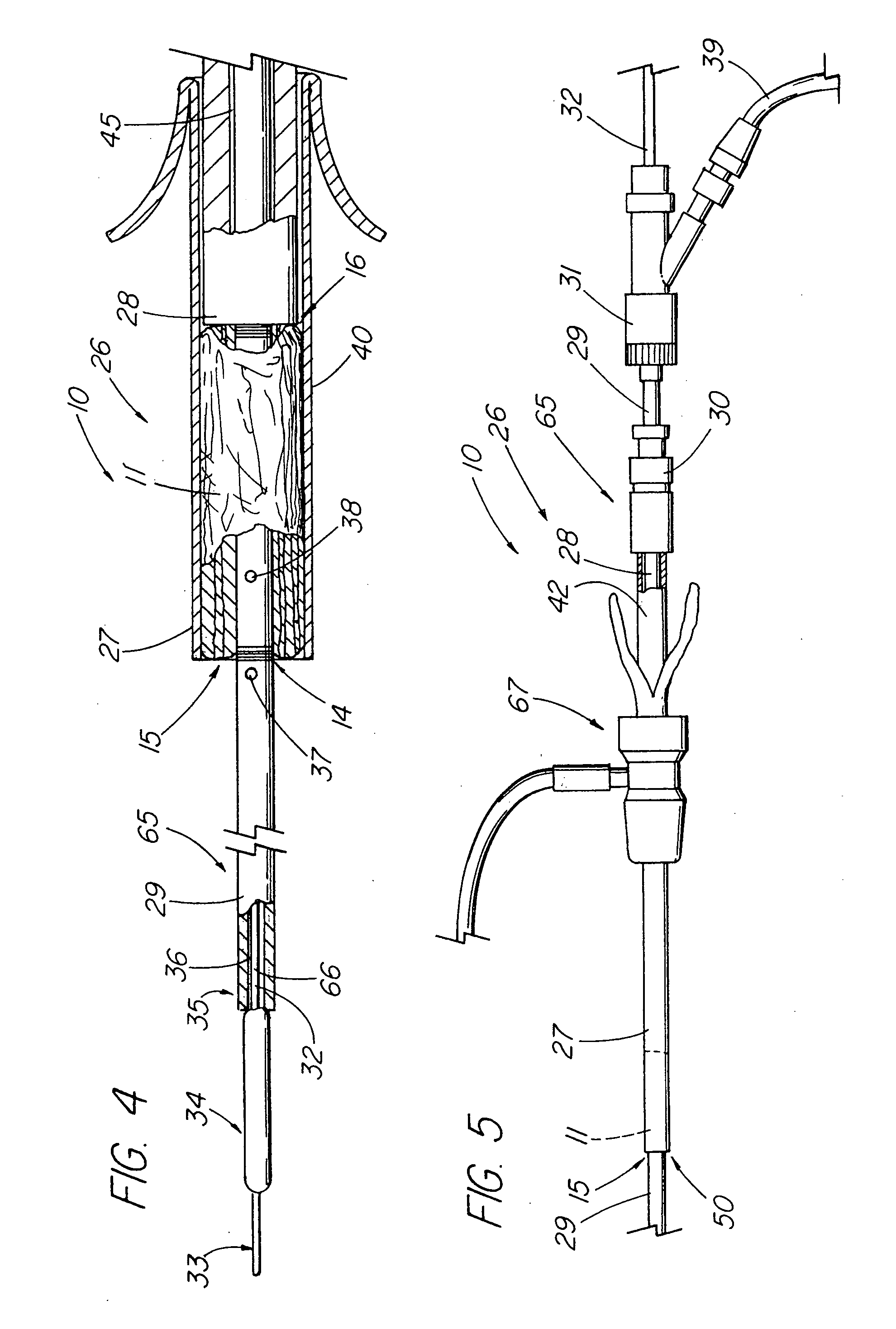Bodily lumen closure apparatus and method
a body lumen and tube technology, applied in the field of medical devices, can solve the problems of increased risk of post-operative infection, patient pain, and substantial blood loss, and achieve the effects of facilitating the rolling of the sheet, preventing blood leakage, and superior remodeling properties
- Summary
- Abstract
- Description
- Claims
- Application Information
AI Technical Summary
Benefits of technology
Problems solved by technology
Method used
Image
Examples
Embodiment Construction
[0046] In one embodiment of the present invention, depicted in FIGS. 1-16, the closure member is a hemostatic member 11 which is delivered to a treatment site within the body of a patient to provide an external hemostatic seal or intravascular occlusion to prevent blood flow, such as from a blood vessel 48 punctured during a procedure using an introducer sheath 27 to gain access of a patient's artery or vein, or to fill an aneurysm 58, especially where a stent graft 57 has been placed. The hemostatic member 11 comprises a construct that is able to absorb blood and swell in diameter, yet has sufficient structural integrity in its expanded state to exert a gentle expansile force that provides a more effective seal for achieving hemostasis than collagenous foam alone, particularly in larger puncture channels (above 8 Fr). The illustrative hemostatic member 11, depicted in FIG. 1, includes a rolled configuration 17 comprising a layer 18 of two materials formed by rolling together a firs...
PUM
 Login to View More
Login to View More Abstract
Description
Claims
Application Information
 Login to View More
Login to View More - R&D
- Intellectual Property
- Life Sciences
- Materials
- Tech Scout
- Unparalleled Data Quality
- Higher Quality Content
- 60% Fewer Hallucinations
Browse by: Latest US Patents, China's latest patents, Technical Efficacy Thesaurus, Application Domain, Technology Topic, Popular Technical Reports.
© 2025 PatSnap. All rights reserved.Legal|Privacy policy|Modern Slavery Act Transparency Statement|Sitemap|About US| Contact US: help@patsnap.com



